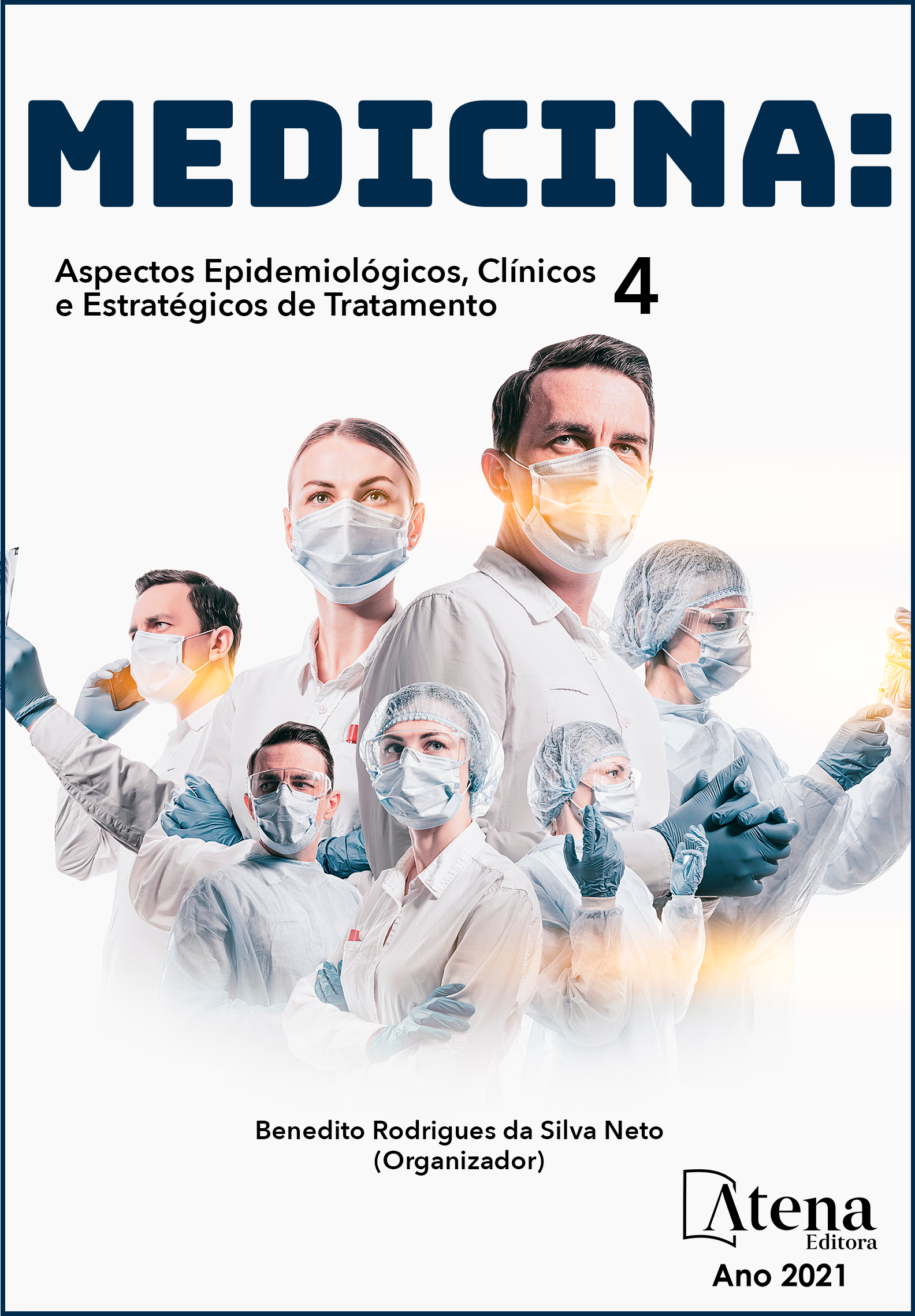
POLIARTERITE NODOSA EM IDOSO COM FEBRE DE ORIGEM OBSCURA: REVISÃO DE LITERATURA COM VISTAS AO RELATO DE CASO
Introdução – A Poliartrite Nodosa é uma doença que se caracteriza, sobretudo, por inflamação necrotizante de artérias de médio calibre que poupam os vasos sanguíneos de fino calibre. Objetivo e justificativa – Relatar o caso de um paciente com Poliartrite Nodosa e justifica-se à medida que a incidência anual de PAN, atualmente, varia de 0 a 1,6 casos / milhão de habitantes nos países europeus e sua prevalência é de cerca de 31 casos / milhão de pessoas. Relato de caso – Homem, 62 anos, com queixa inicial de febre de origem indeterminada, cansaço, emagrecimento, sudorese noturna, lesões em membro inferior direito e dor testicular no início do quadro. O diagnóstico baseou-se nas recomendações do Colégio Americano de Reumatologia pela presença dos seguintes critérios: perda ponderal superior a 4 kg, dor testicular e mialgia e, na eliminação de outros possíveis diagnósticos por meio de anamnese, exame físico e exames complementares. No paciente, a biópsia da pele e músculo evidenciaram alterações histopatológicas compatíveis. Não houve presença de glomerulonefrite associada. Foram solicitados fatores antinucleares e fator reumatóide para exclusão de outras formas de vasculite ou enfermidades reumatológicas de maior gravidade, como lúpus eritematoso ou a artrite reumatoide. Discussão - Devido à sua fisiopatologia, a PAN pode causar isquemia ou hemorragia tecidual em uma variedade de órgãos e sistemas. Consequentemente, a PAN pode gerar manifestações sistêmicas não específicas, como mal-estar, perda de peso, febre, artralgia e mialgia, presentes em uma alta proporção de pacientes e sintomas decorrentes de disfunção ou danos aos órgãos-alvo. Sem tratamento, a doença é fatal na maioria dos casos por insuficiência renal crônica ou complicações da hipertensão. Conclusão - A PAN é uma doença multissistêmica afetando principalmente a pele e o sistema nervoso periférico. O prognóstico depende, basicamente, dos sistemas atingidos pela doença e da idade do paciente.
POLIARTERITE NODOSA EM IDOSO COM FEBRE DE ORIGEM OBSCURA: REVISÃO DE LITERATURA COM VISTAS AO RELATO DE CASO
-
DOI: 10.22533/at.ed.59621140518
-
Palavras-chave: poliartrite nodosa, febre de origem obscura, vasculite, reumatologia, clínica médica
-
Keywords: nodular polyarthritis, fever of obscure origin, vasculitis, rheumatology, medical clinic
-
Abstract:
INTRODUCTION - Nodular Polyarthritis (NPA) is a disease that is characterized, above all, by necrotizing inflammation of medium-caliber arteries that spare fine-caliber blood vessels. OBJECTIVE AND JUSTIFICATION - Reporting the case of a patient with Nodular Polyarthritis and justifying the measure that the annual evidence of NPA currently ranges from 0 to 1.6 cases/million inhabitants in European countries and its prevalence is around 31 cases/million of people. CASE REPORT - Male, 62 years old, with initial complaint of fever of undetermined origin, tiredness, weight loss, night sweating, lesions in the right lower limb and testicular pain at the onset of the condition. The diagnosis was based on the recommendations of the American College of Rheumatology due to the presence of the following criteria: weight loss greater than 4 kg, testicular pain and myalgia, and the elimination of other possible diagnoses through anamnesis, physical examination and complementary exams. In the patient, skin and muscle biopsy showed compatible histopathological changes. There was no presence of associated glomerulonephritis. Antinuclear factors and rheumatoid factor were requested to exclude other forms of vasculitis or more serious rheumatologic diseases, such as lupus erythematosus or rheumatoid arthritis. DISCUSSION - Due to its psychopathology, NPA can cause ischemia or tissue hemorrhage in a variety of organs and systems. Consequently, NPA can generate non-specific systemic manifestations, such as malaise, weight loss, fever, arthralgia and myalgia, present in a high proportion of patients and symptoms resulting from dysfunction or damage to target organs. Without treatment, the disease is fatal in most cases due to chronic renal failure or complications of hypertension. CONCLUSION - NPA is a multisystem disease that mainly affects the skin and the peripheral nervous system. The prognosis depends, basically, on the systems affected by the disease and the patient’s age.
-
Número de páginas: 8
- Gabriela Crespo Pires
- Letícia Colisse
- Filipe Osório Dal Bello
- Évelin Griebeler da Rosa
- Sandra Struk
- Marcel Stropper
- Edson Leandro de Ávila Minozzo
- Luana Antocheviez de Oliveira
- Neidi Isabela Pierini


